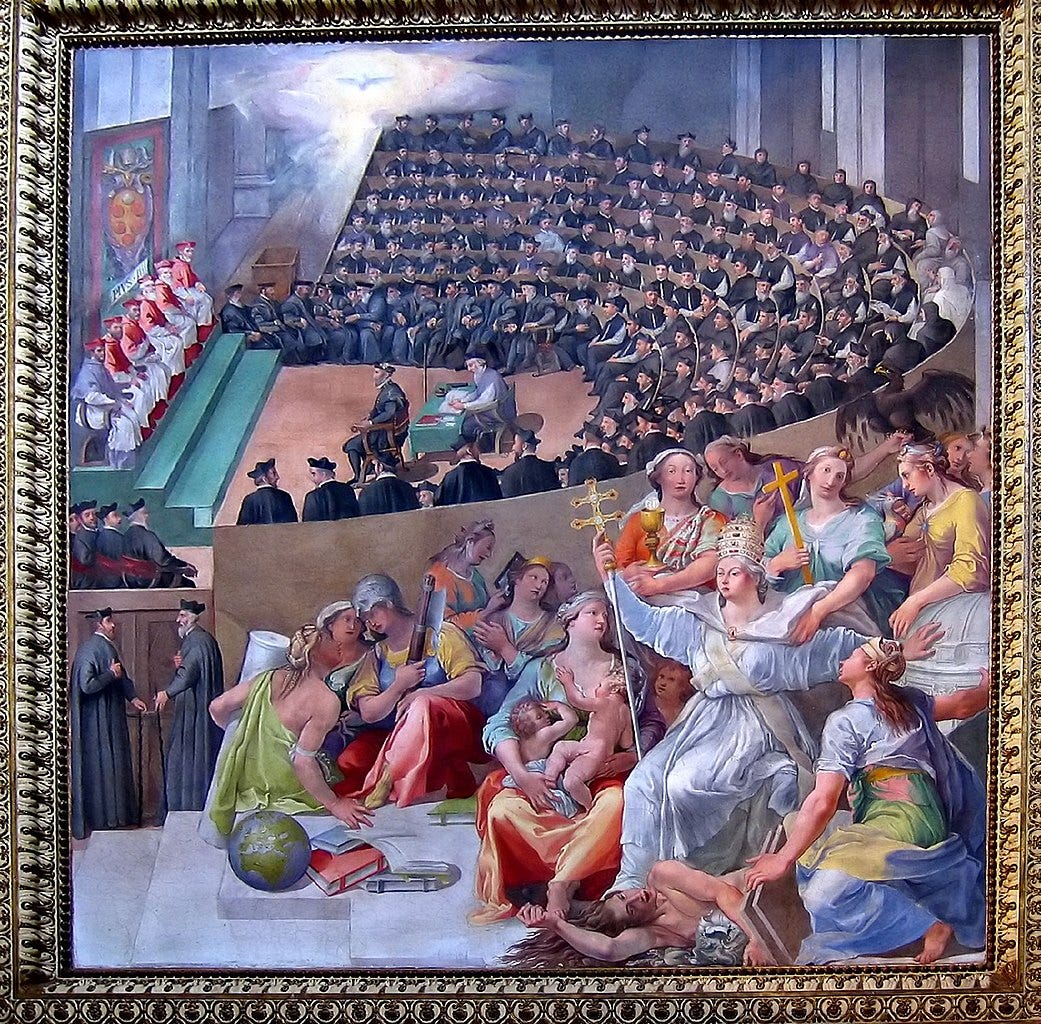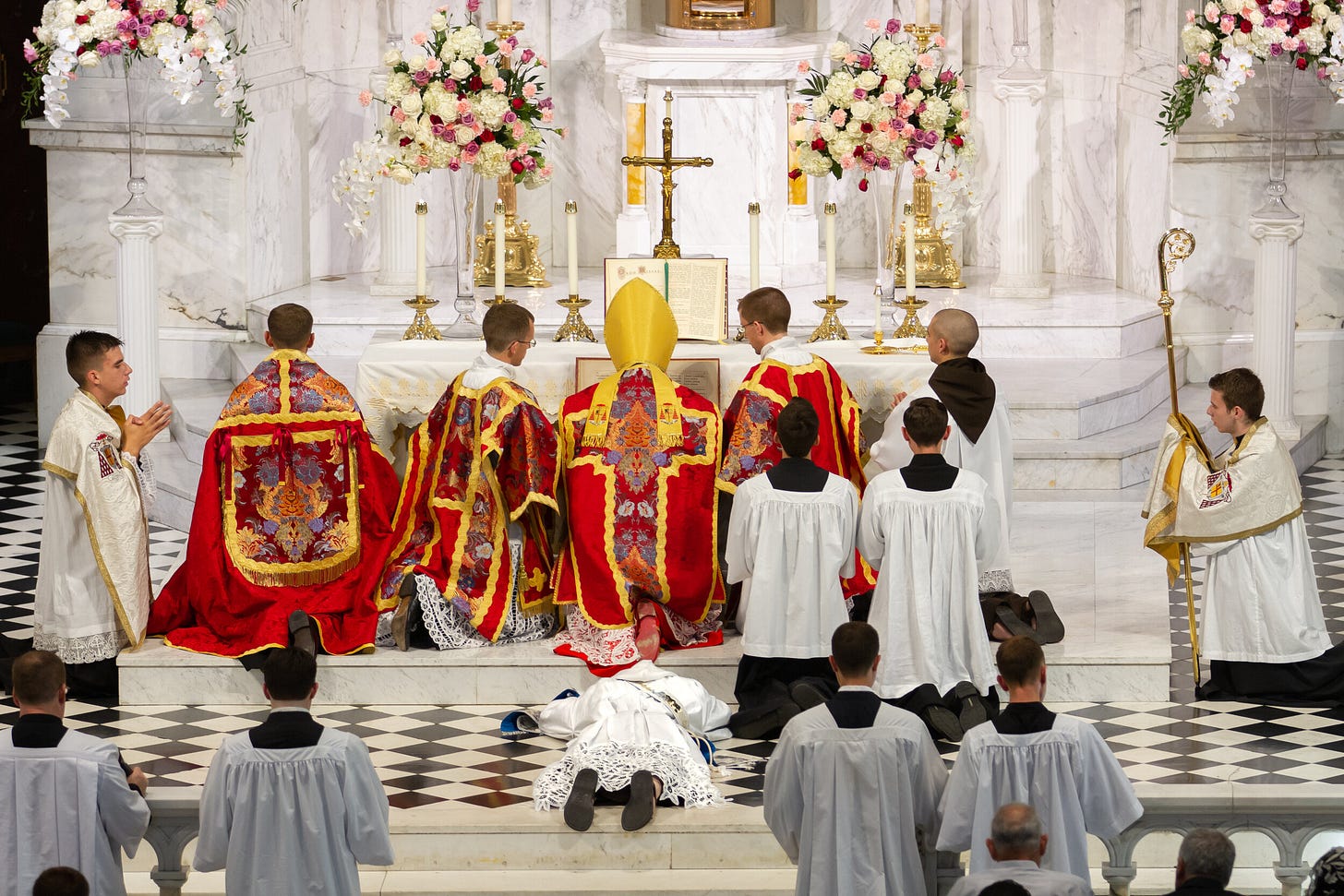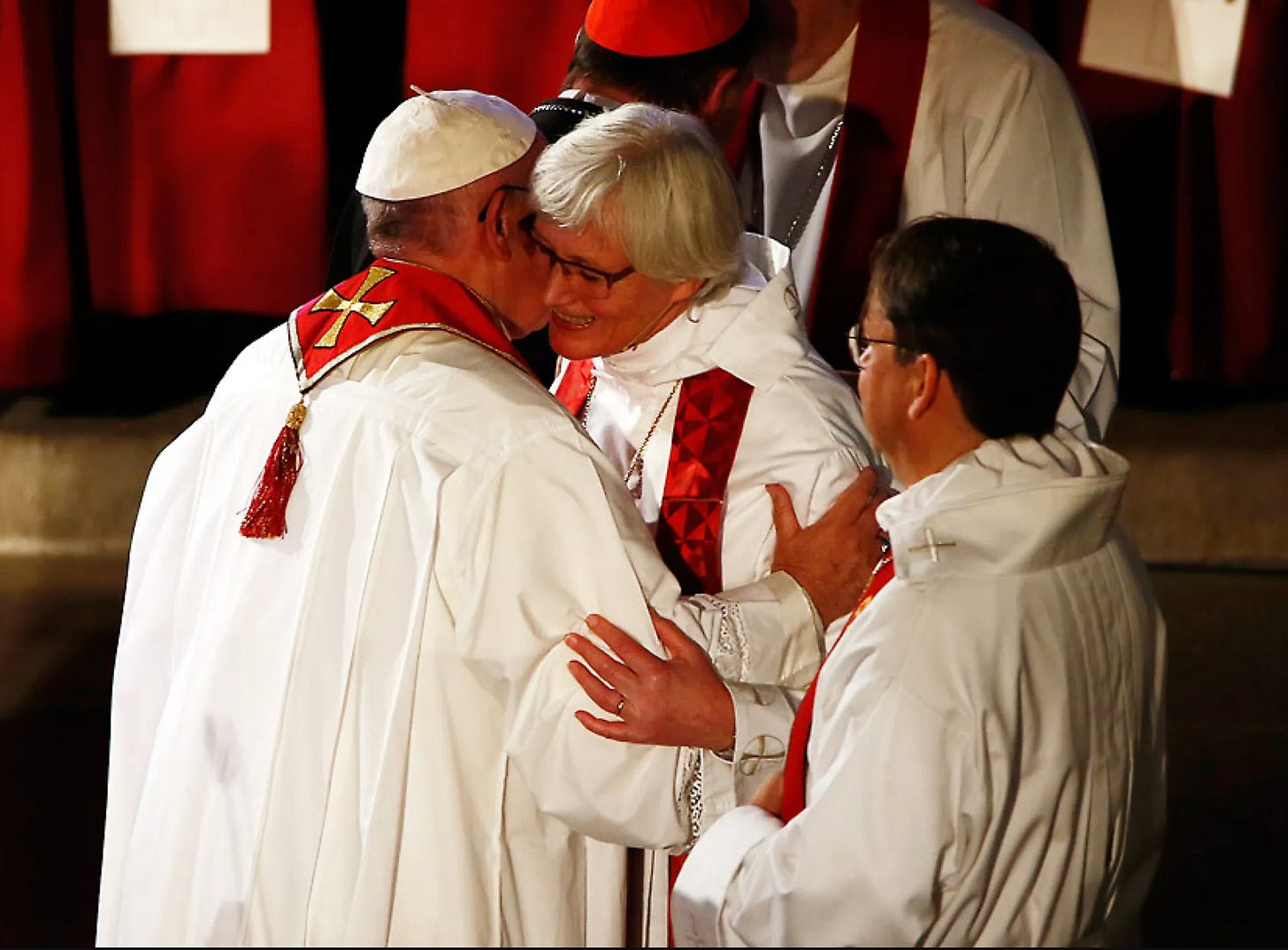What Would Jesus Say About Female Priests?
A historical reading of the New Testament clarifies misunderstandings about the priesthood and the clergy
The well-timed release of the papal thriller The Conclave is currently fueling an incendiary debate over women’s ordination in the Roman Catholic Church. In the film, the newly elected pope scandalously turns out to be a biological woman who was raised as a man.
Progressives at Pope Francis’s just-concluded global summit, the Synod on Synodality, who are campaigning for female deacons (to begin with) are miffed that the pontiff handed them a stone instead of bread and a snake instead of a fish.
“Ordaining a woman would be like trying to consecrate potato chips and Pepsi for Holy Communion,” Fr. Dwight Longenecker, a popular author who converted to Catholicism from Anglicanism, , posted on X last week.
The inflammatory comment triggered a barrage of tweets fired like rocket-propelled-grenades at the cleric. Even conservative Catholics accused Longenecker of “misogyny” for comparing women to “junk food.”
“Jesus designated none of his followers as priests.”
“That a priest would say something so sacrilegious and demeaning is very sad. You may have your opinion on women clergy but to demean all women is deplorable,” Karen Groucutt shot back. “Women like men are made in the image and likeness of God, and are graced with immortal souls. Shame on you!”
Longenecker denied he was being misogynistic.
While the issue is currently being hotly debated in Catholic circles, it also has been discussed at various times in evangelical ones, most notably by leaders such as John MacArthur and the entire Southern Baptist Convention — and therefore is relevant to the whole Body of Christ.
Therefore, let’s look at what the Bible itself has to say about the issue — and where it is silent.
Trent’s Anathema on Anticlericalism
When an X-user asked Longenecker to provide biblical evidence for the sacrament of priestly ordination, he replied: “Catholics are not Bible-only Christians, but for biblical support consider: 1Timothy 4:14.”
Longenecker is right. Catholics don’t do Sola Scriptura. But, on the priesthood, the Catholic Church unequivocally appeals to the New Testament and, in the infallible Council of Trent, claims that “this priesthood was instituted by the same Lord our Saviour.”
Trent categorically declares: “If any one saith that there is not in the New Testament a visible and external priesthood” but “only an office and bare ministry of preaching the Gospel, or, that those who do not preach are not priests at all; let him be anathema.”
But did Jesus and the apostles really institute a cultic, sacramental, and sacrificing priesthood? If so, where is the historical and exegetical evidence for such a monumental claim?
What Would Jesus Say About Male Priests?
Here’s a modest argument. If one were to ask, “What would Jesus say about female priests?” one might well need to ask, “What would Jesus say about male priests?” One would then need to demonstrate that Jesus did institute the priesthood as a clerical caste.
As a biblical scholar who has taught at both Catholic and Protestant seminaries, my reply to a student who posed the above questions would be in line with uncontested Catholic and Protestant biblical and liturgical scholarship.
“Women who are baptised believers in Jesus are already priests,” I would reply with a cheeky grin.
“Prior to the beginning of the third century, no Christian text uses the title ‘priest.’”
If the student asked, “So why are women asking for something that neither Jesus nor the apostles instituted?” I would add: “And men who are baptized believers in Jesus are already priests.”
By this, I am referring to the fact that all Christians belong to Christ’s “royal priesthood” and are “living stones … being built up as a spiritual house, to be a holy priesthood, to offer spiritual sacrifices acceptable to God through Jesus Christ (1 Peter 2:9,5; Revelation 1:6).
But did Jesus create a special caste of priests?
No Cultic Priesthood in the New Testament
The Greek word used in the New Testament for “priest” (in the sense of a cultic functionary who offers sacrifices) is hiereus. It is the word used for pagan priests, Jewish priests, and for all Christians who are called to offer “sacrifices” of praise and thanksgiving, expressing the priestly life of the community (Hebrews 13:15). It is never used to designate Christian ministers.
It is also the word used for Jesus, especially in the book of Hebrews, which contrasts the futile sacrifices made by cultic priests throughout the Old Testament with the efficacious sacrifice offered once for all by Jesus, the High Priest.
“There is no evidence in the language of Jesus that he thought about a priesthood replacing the Jewish priesthood in the Temple,” concedes the great Catholic New Testament scholar Fr. Raymond E. Brown in his book Biblical Exegesis and Church Doctrine.
Jesus “designated none of his followers as priests,” Brown observes. The Church later read back the institution of the priesthood into the accounts of the Last Supper, but “we have virtually no information” about who presided at the Eucharist in New Testament times.
Dogma Develops on the Priesthood
Brown admits that the Church’s “formulation of a dogma did not always coincide with what the biblical author originally intended.” Essentially, the “view that the apostles themselves ordained all the ministers of the eucharist cannot be verified in the New Testament.”
What would happen if the Catholic Church ordained women? Brown says that a great number of conservative Catholics would leave the church and form a schismatic communion. Their reasoning would be that Jesus did not ordain women and that therefore the church does not have a right to ordain women.
Paul Bradshaw, one of the world’s top liturgical scholars, disagrees.
“Ordaining a woman would be like trying to consecrate potato chips and Pepsi for Holy Communion.”
“Prior to the beginning of the third century, no Christian text uses the title ‘priest’ (hiereus in Greek, sacerdos in Latin) directly to designate a particular individual or group of ministers within the Church,” he writes in The Search for the Origins of Christian Worship.
Bradshaw, who teaches at the Catholic University of Notre Dame, shows how “the application of sacerdotal language and imagery to Christian ministers evolved only slowly.”
No source before the fourth century, with the possible exception of the so-called Apostolic Tradition (itself “a very unreliable witness”), refers to anything resembling an ordination rite such as we find in later evidence.
Diversity of Biblical Ministries
Now let’s get back to my classroom. A traditionalist Catholic seminary student might brandish his Douay-Rheims Bible and show me how Paul asks Titus to “ordain priests in every city” (Titus 1:5), and says that “priests that rules well” should be honored (1 Timothy 5:17), and that “priests of the church” are to anoint the sick (James 5:14).
However, Douay-Rheims is committing a grave philological, theological, and ideological error by mistranslating the Greek word presbyteros as “priest.” The Catholic priest William Tyndale was burned at stake for heresy partly for correctly translating presbyteros as “elder” or “senior,” as I wrote previously for The Stream. Today, no Catholic Bible would dare to render presbyteros as “priest.”
There are multiple leadership ministries in the New Testament. In addressing the church in Ephesus, Paul speaks of apostles, prophets, evangelists, shepherds, and teachers (Ephesians 4:11); elsewhere he lays down qualifications for the presbyteros (elder), episkopos (bishop), and diakonos (deacon) (1 Timothy 1:5-9, 3:1-7, 8-12).
Episkopos is translated literally as “overseer” in the Catholic edition (CE) of the English Standard Version. (The ESV-CE Lectionary translates it as “bishop.”)
The New Testament uses presbyteros and episkopos interchangeably, leading most scholars to conclude that the former was used in Jewish churches while the latter was used in Greek churches (as even Jerome argues in his commentary on Titus).
Episkopos is a secular term akin to English words like supervisor, manager, or guardian. Jerome translated it superattendens (superintendent), and Ambrose as superinspector (overseer). Claiming no position of supreme leadership, Peter calls himself a “fellow elder” (1 Peter 5:1).
Ending Acrimonious Debate Over Anachronistic Clericalism
A biblical understanding of the priesthood will end the fractious, unhelpful discussion over the “validity” of holy orders of the Church and within local congregations, leading to a new ecumenical rapprochement.
Such debates are almost farcical. For while Roman Catholics dismiss Anglican holy orders as “invalid,” some radical traditionalists Catholics and the fissiparous Sedevacantist sects mushrooming on the contemporary Catholic landscape also dismiss Catholic priests who are ordained in the Novus Ordo (New Rite) Church as having “invalid” orders.
What would you say if you were watching a movie set in ancient Rome, like Ben-Hur or Spartacus, and spotted a Roman centurion wearing a Rolex watch? That would be historically inaccurate for the time period portrayed in the films. It was invented much later. And it is just as anachronistic to claim that Jesus or His apostles instituted a sacramental priesthood.
That might get an online apologist a few extra clicks, but when all is said and done, historical truth trumps tribal and triumphalist ecclesial bombast.
Originally published in The Stream.
Dr. Jules Gomes, (BA, BD, MTh, PhD), has a doctorate in biblical studies from the University of Cambridge. Currently a Vatican-accredited journalist based in Rome, he is the author of five books and several academic articles. Gomes lectured at Catholic and Protestant seminaries and universities and was canon theologian and artistic director at Liverpool Cathedral.








Francis embracing a Swedish lesbian wearing a cross is enough to make me vomit. We debate points of doctrine within a rotten house.
Nooooooooo!